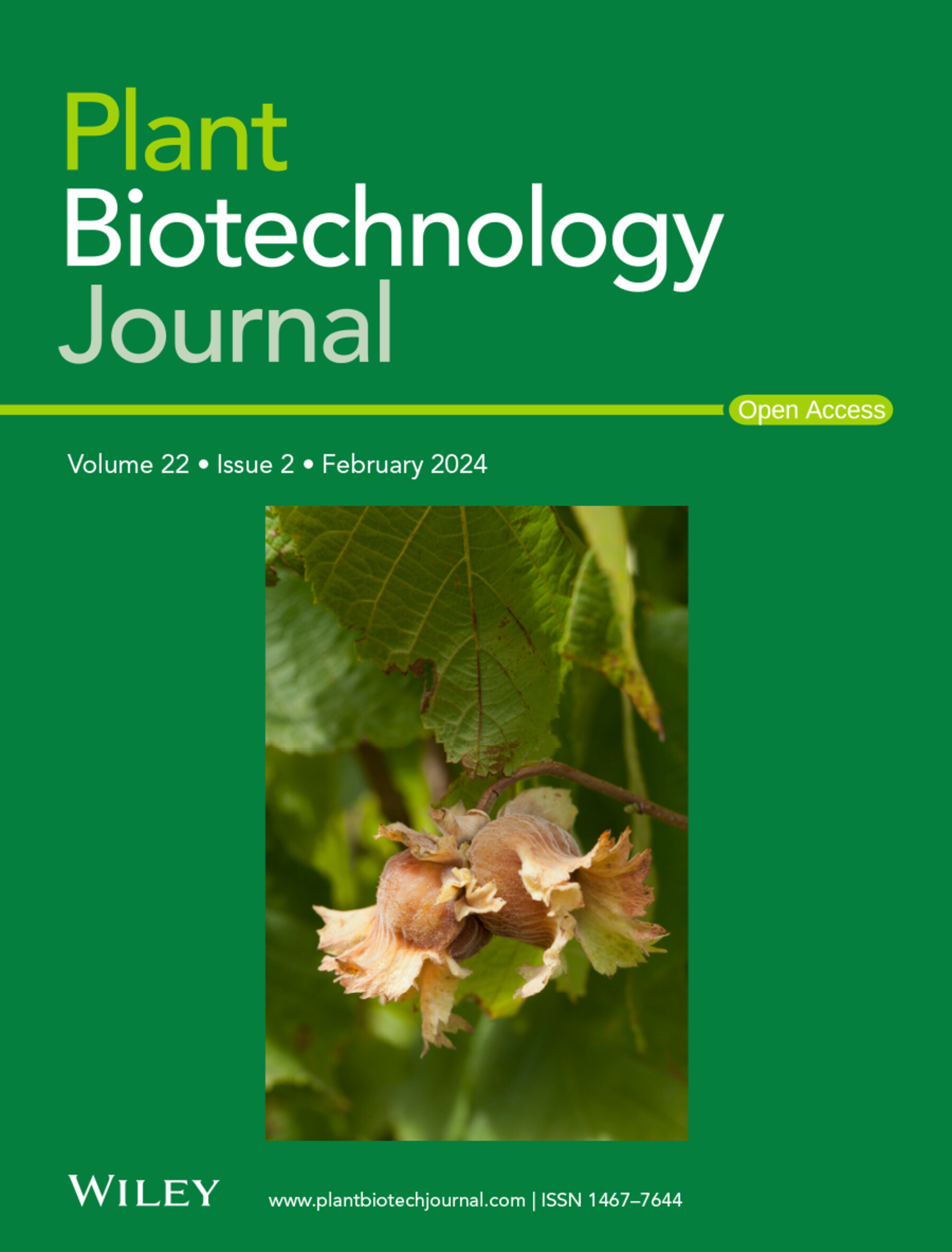代谢组学和单细胞转录组学分析揭示了艾叶腺毛的次生代谢物谱和潜在的发育动力学
IF 10.5
1区 生物学
Q1 BIOTECHNOLOGY & APPLIED MICROBIOLOGY
引用次数: 0
摘要
植物腺毛(GTs)的特点是能够合成和储存丰富的次生代谢物,具有重要的生物学意义。药用植物艾叶(Artemisia argyi)具有密集的GTs覆盖,但其精确的代谢组成和发育分子动力学特征尚不充分。采用液相色谱-质谱联用(LC-MS)和气相色谱-质谱联用(GC-MS),鉴定了艾叶腺毛与非腺毛之间969种代谢物(DAMs)的差异积累。GTs在萜类、黄酮类和脂肪酰基等多种代谢产物中均显著富集,其中倍半萜类是坝中含量最多的萜类亚类。为了阐明GT次生代谢物生物合成和发育的分子基础,研究人员绘制了艾叶单细胞转录组图谱,对叶肉细胞(MCs)、表皮细胞(ECs)、维管细胞(VCs)、气孔保护细胞(GCs)和气孔保护细胞(GTs)的细胞群体进行了注释。伪时间轨迹分析揭示了GT的连续发育轨迹,并确定了几个可能参与GT发育的候选转录因子(TFs)。利用单细胞图谱,我们构建了倍半萜生物合成基因的细胞类型特异性共表达网络。在GT特异性表达模块中,我们鉴定出β -石竹烯合成酶AarTPS77,而EC特异性的AarTPS52被发现具有β -法尼烯合成酶的功能。此外,我们还对AarTPS95和AarTPS96进行了功能表征,这两种化合物催化形成了germacrene A和另外12种倍半萜类化合物。这些发现为艾叶毛状体发育和次生代谢物积累的分子基础提供了新的认识,为提高艾叶药材质量奠定了基础。本文章由计算机程序翻译,如有差异,请以英文原文为准。
Metabolomic and Single‐Cell Transcriptomic Analyses Shed Light on Secondary Metabolite Profiling and Potential Developmental Dynamics of Glandular Trichomes in Artemisia argyi
Plant glandular trichomes (GTs) are characterised by their ability to synthesise and store abundant secondary metabolites of significant biological importance. The medicinal plant Artemisia argyi exhibits a dense covering of GTs, yet the precise metabolic compositions and the developmental molecular dynamics of A. argyi GTs remain insufficiently characterised. Using liquid chromatography–mass spectrometry (LC–MS) and gas chromatography–mass spectrometry (GC–MS), we identified 969 differentially accumulated metabolites (DAMs) between GTs and non‐glandular trichomes (NGTs) of A. argyi . GTs were significantly enriched in diverse metabolites, including terpenoids, flavonoids and fatty acyls, among which sesquiterpenoids were the most abundant terpenoid subclass in DAMs. To elucidate the molecular basis of GT secondary metabolite biosynthesis and development, we generated a single‐cell transcriptomic atlas of A. argyi leaves, annotating cell populations of mesophyll cells (MCs), epidermal cells (ECs), vascular cells (VCs), stomatal guard cells (GCs) and GTs. Pseudotime trajectory analysis uncovered the continuous developmental trajectory of GTs and identified several candidate transcription factors (TFs) potentially involved in GT development. Leveraging the single‐cell atlas, we constructed cell‐type‐specific co‐expression networks for sesquiterpene biosynthesis genes. Within the GT‐specific expression module, we identified β‐caryophyllene synthase AarTPS77, while the EC‐specific AarTPS52 was found to function as β‐farnesene synthase. Furthermore, we functionally characterised AarTPS95 and AarTPS96, which catalyse the formation of germacrene A and 12 additional sesquiterpenoids. These findings provide insights into the molecular basis of trichome development and secondary metabolite accumulation in A. argyi , laying the foundation for improving the quality of medicinal materials.
求助全文
通过发布文献求助,成功后即可免费获取论文全文。
去求助
来源期刊

Plant Biotechnology Journal
生物-生物工程与应用微生物
CiteScore
20.50
自引率
2.90%
发文量
201
审稿时长
1 months
期刊介绍:
Plant Biotechnology Journal aspires to publish original research and insightful reviews of high impact, authored by prominent researchers in applied plant science. The journal places a special emphasis on molecular plant sciences and their practical applications through plant biotechnology. Our goal is to establish a platform for showcasing significant advances in the field, encompassing curiosity-driven studies with potential applications, strategic research in plant biotechnology, scientific analysis of crucial issues for the beneficial utilization of plant sciences, and assessments of the performance of plant biotechnology products in practical applications.
 求助内容:
求助内容: 应助结果提醒方式:
应助结果提醒方式:


